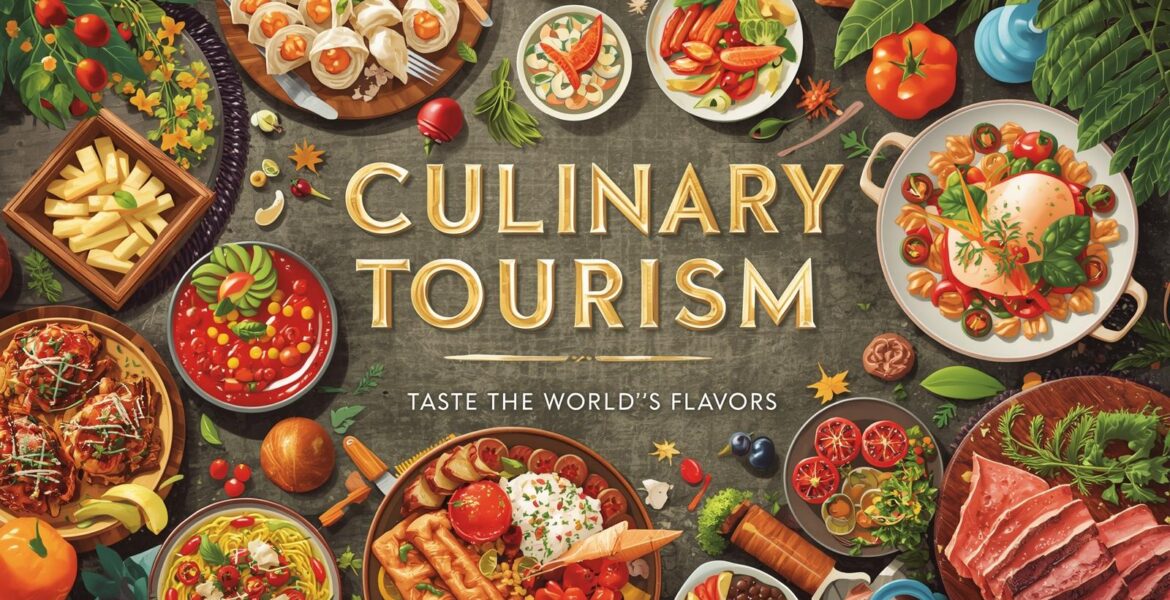In an era where travel is as much about the journey as the destination, culinary tourism has emerged as a captivating way to explore the world. It’s an invitation to savor the essence of a place through its food and drink, offering a visceral connection to the culture and history of a region. Whether you’re a travel agent crafting unique itineraries, a lifestyle influencer seeking the next big trend, or a hotel manager looking to enhance guest experiences, understanding the nuances of culinary tourism can elevate your offerings and enrich your audience’s journey.
Understanding Culinary Tourism
Culinary tourism, at its core, is the pursuit of unique and memorable eating and drinking experiences, both near and far. It’s about much more than just food; it’s about immersing oneself in the food culture of a destination, understanding its traditions, and connecting with its people.
The Essence of Culinary Experiences
Culinary experiences offer travelers a taste of authenticity that’s hard to find in conventional tourist activities. From street food tours in bustling Asian markets to vineyard visits in the serene countrysides of Europe, these experiences allow travelers to engage with locals, learn about traditional cooking techniques, and appreciate the stories behind the flavors.
Incorporating culinary tourism into your travel offerings encourages clients to explore with an open heart and a curious palate. It’s about breaking bread with strangers, sharing stories, and creating memories that linger long after the meal is over.
Food Culture as a Gateway to Deeper Connections
Food is a universal language, a thread that weaves together the fabric of diverse cultures. It serves as a gateway to understanding the values, history, and lifestyle of a community. By engaging with the food culture of a place, travelers gain insights into the daily lives of its people, fostering deeper connections and mutual respect.
Crafting Unique Culinary Journeys
For travel agents seeking to create exceptional itineraries, culinary tourism provides a canvas for innovation. Here are some strategies to craft unforgettable culinary journeys:
Embrace Local and Seasonal
Highlighting local and seasonal ingredients not only ensures the freshest and most flavorful experiences but also supports sustainable practices and local economies. Encourage clients to visit farmers’ markets, dine at farm-to-table restaurants, and participate in foraging tours to truly appreciate the bounty of a region.
Offer Hands-On Experiences
Interactive experiences, such as cooking classes or food workshops, offer travelers a chance to engage with the culinary traditions of a destination actively. These hands-on activities provide a deeper understanding of the techniques and ingredients that define a region’s cuisine.

Captivating Content for Influencers
Lifestyle influencers can harness the power of culinary tourism to create captivating content that resonates with audiences seeking authenticity and adventure.
Storytelling Through Flavors
Use evocative language and vivid imagery to transport your audience to the heart of culinary experiences. Share the stories of the people you meet, the flavors you taste, and the emotions these experiences evoke. By weaving narratives that highlight the connection between food and culture, you can inspire your audience to explore the world with a fresh perspective.
Highlight Hidden Gems
Seek out lesser-known destinations and culinary traditions that offer unique stories waiting to be told. Shine a spotlight on the artisans, farmers, and chefs who are preserving and innovating their culinary heritage, providing your audience with fresh, engaging content that stands out in the crowded travel niche.
Enhancing Hotel Experiences
For hotel managers, integrating culinary tourism into guest experiences can set your property apart and attract discerning travelers who value authenticity over spectacle.
Curated Culinary Packages
Develop curated culinary packages that offer guests a taste of the region’s food culture. Partner with local chefs, restaurants, and food producers to create exclusive dining experiences, farm tours, or cooking classes that showcase the flavors and traditions of the area.
Storytelling in Dining
Incorporate storytelling into your dining offerings by highlighting the origins and cultural significance of dishes served at your hotel. This approach not only enhances the dining experience but also fosters a deeper appreciation for the local culture among your guests.
Embracing the Journey
Culinary tourism is more than just a trend; it’s a transformative way to experience the world. By embracing the flavors and traditions of a place, travelers can forge meaningful connections and create lasting memories. Whether you’re crafting itineraries, creating content, or enhancing hotel experiences, the opportunities within culinary tourism are as boundless as the flavors of the world.
As you embark on this journey of taste, remember that the true essence of travel lies not in the sights you see, but in the flavors you savor and the stories you share along the way.


